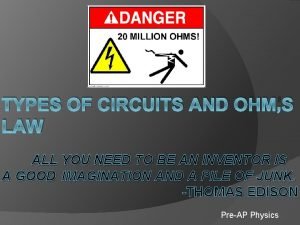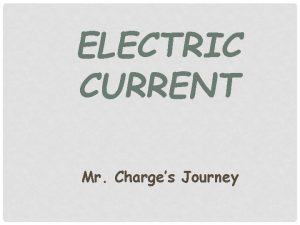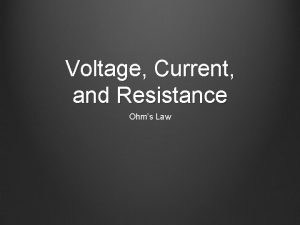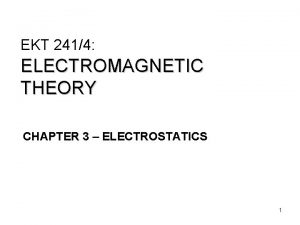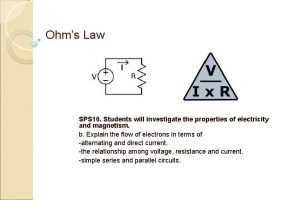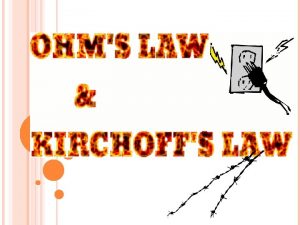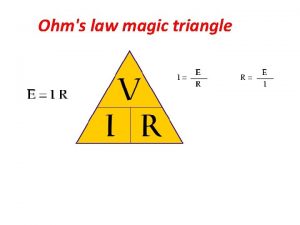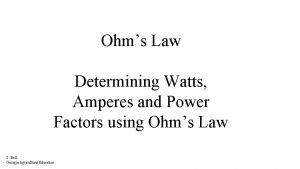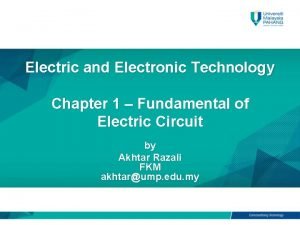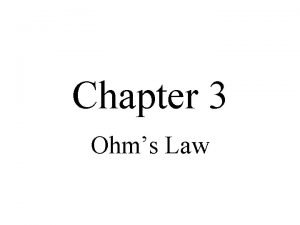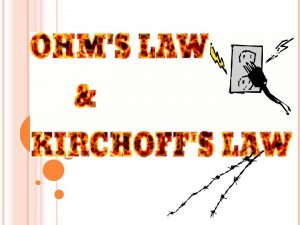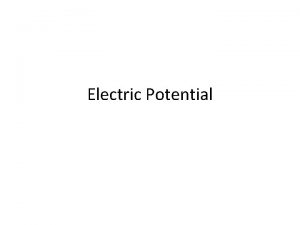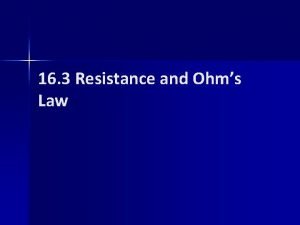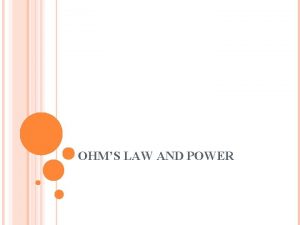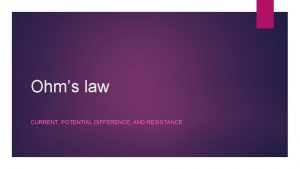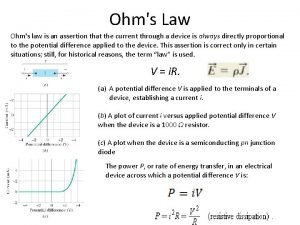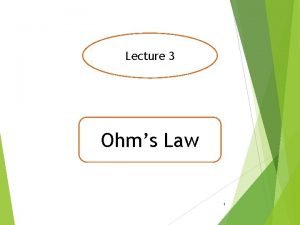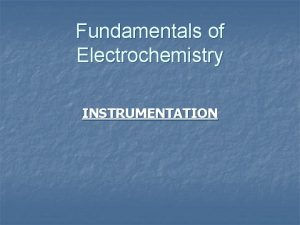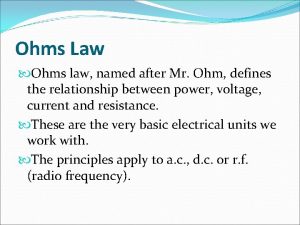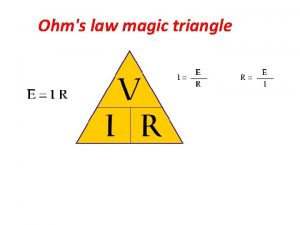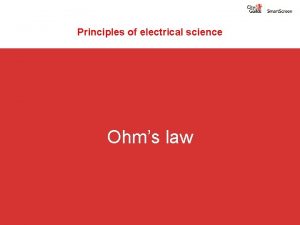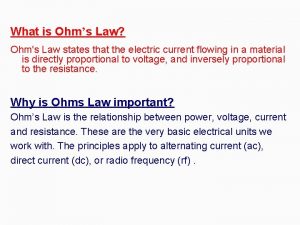Electric Current and Ohms Law Electric Potential EnergyEPE




















- Slides: 20

Electric Current and Ohm’s Law

Electric Potential Energy(EPE) • Particles with charges have potential energy. • Opposite charges are attracted to each other. • Like charges are repelled.

Electric Potential Energy (EPE) • When two opposite charges are held apart, electric potential energy is present

Electric Potential Energy (EPE) • When two of the same charges are pushed together, potential energy is present.

Unit of Electric Potential (Voltage) • The unit of electric potential is volts.

What is an electric current? • An electric current is the flow of charged particles. • Particles always move from areas with many charged particles to areas with very few charged particles.

What is an Ampere (A)? • An ampere is the unit of electric current. • Nearly always called an amp • 1 ampere = 1 coulomb of charge every second • 1 ampere = 1 coulomb/second

What causes an electric current? • A difference in energy potential (volts) causes charged particles to flow • The current will continue to flow until the volts are equal.

How can a current continue flowing? • A current can continue to flow as long as the voltage difference remains. • Batteries and generators create a voltage difference that allow current to flow.

Two types of current: • Direct current: • All charge flows in one direction • Alternating current: • Charges reverse direction in a set frequency.

What is resistance? • Resistance is the property of a material that resists the flow of charged particles through it.

What is resistance measured in? • Resistance is measured in ohms. • The symbol Ω (omega) is used for ohms.

What affects resistance? • Conductivity • Better conductors offer less resistance • Temperature • Higher temperatures = higher resistance

What affects resistance? • Thickness of the wire • Thin wires have less resistance • Length of the wire • The longer the wire, the more resistance.

What is Ohm’s Law? • For a circuit of a given resistance, the current and voltage are proportional.

Ohm’s Law formula • Current = voltage ÷ resistance • In units: amperes = volts ÷ ohms

Associated Formulas • Voltage = current x resistance • Resistance = voltage ÷ current

Sample Problem One: • A 4 V battery is attached to a circuit with 2Ω resistance. What is the current? • Current = voltage ÷ resistance • Current = 4 V ÷ 2Ω • Current = 2 A

Sample Problem Two: • A 5 A current is occurring across a 3Ω resistor. What is the voltage? • Voltage = current x resistance • Voltage = 5 A x 3Ω • Voltage = 15 V

Sample Problem Three: • A 20 V source is producing 4 A of current. What is the resistance? • Resistance = voltage ÷ current • Resistance = 20 V ÷ 4 A • Resistance = 5Ω
 Electrical potential energy
Electrical potential energy Equipotential lines
Equipotential lines Volts to ev
Volts to ev Electric potential inside non conducting sphere
Electric potential inside non conducting sphere Potential energy of a system of charges
Potential energy of a system of charges Joules to newtons
Joules to newtons Energy from electric field
Energy from electric field Electric field from electric potential
Electric field from electric potential Types of circuits and ohm's law answer key
Types of circuits and ohm's law answer key A portable electric heater has a resistance of 8 ohms
A portable electric heater has a resistance of 8 ohms Ohm's law
Ohm's law Point form of ohms law
Point form of ohms law Ohms law resistance
Ohms law resistance State ohm's law of electricity
State ohm's law of electricity Electric current triangle
Electric current triangle Volts = amps x ohms
Volts = amps x ohms Ohms law emf
Ohms law emf Derive ohms law
Derive ohms law Introduction of ohm's law
Introduction of ohm's law Ohms law worksheet
Ohms law worksheet A certain light bulb
A certain light bulb








